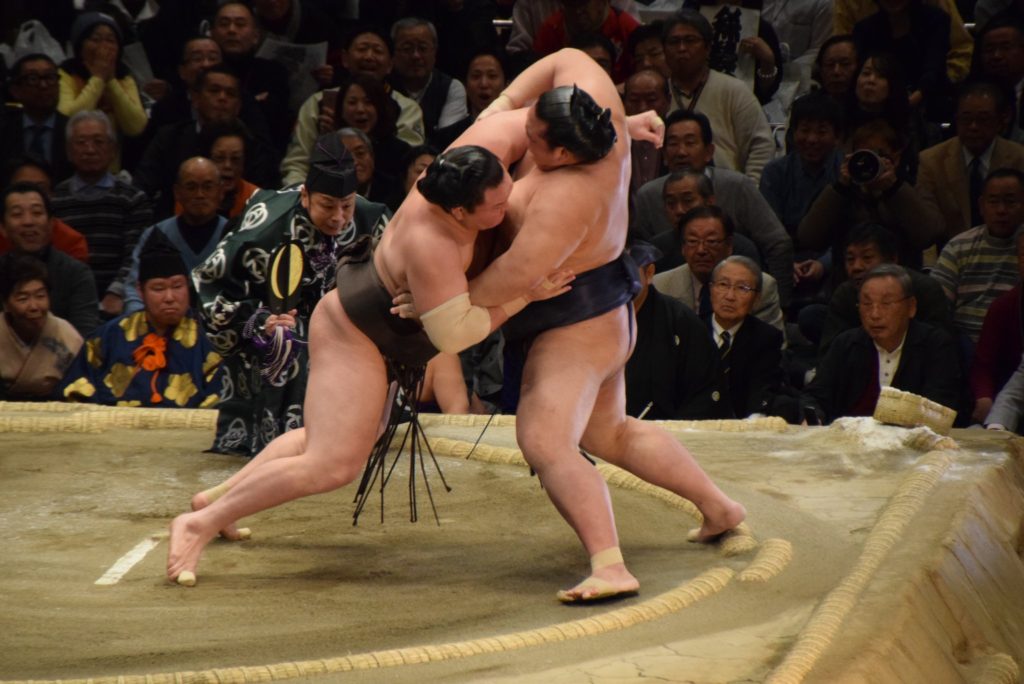Last spring, my husband and I started watching the Grand Sumo Tournament Highlights that NHK World aired. It’s a roughly 25 minute recap of the best matches of the day. We were hooked. As with so many things in life where you make assumptions without knowing all the facts, sumo wasn’t quite as straightforward. I can only speak for myself, but what I felt had always been depicted as two very overweight men pushing each other actually had a lot more nuance. Since then we haven’t dared miss a day of highlights. That’s why attending a sumo tournament is on My Must See List.
All About Sumo
Let’s start with the basics. A sumo match pits two wrestlers (or rikishi) against each other inside a ring with a nearly 15 foot diameter. The goal is to get your opponent out of the ring or for them to touch the ground with anything other than the soles of their feet. The ring, or dohyo, is made of a clay/sand mix and straw is used to outline the circle. Unlike boxing, there are no ropes. The concept is simple enough but in practice it can be quite difficult.
Each technique for winning has a name. For example, oshidashi is a frontal push out while yorikiri is when you have a grip on your opponent’s mawashi (the wrapping loin cloth belt that is the only clothing worn) and force them backwards out of the ring. There are 82 different winning techniques.
Sumo Tournaments
Sumo is a traditional Japanese sport that has been around for hundreds of years. Today, tournaments are held six times per year. Each tournament is held in a different city. Each rikishi has a rank based on their skills and falls into a different division. The ultimate goal for any rikishi is to reach the top rank of yokozuna. Just last month, 30 year old rikishi Kisenosato was promoted to yokozuna. He is the first Japanese wrestler to reach this rank since 1998. He joins three Mongolian yokozuna: Hakuho, Harumafuji and Kakuryu.
What seems like a simple sport actually isn’t quite so simple once you watch a few matches. What’s more, not all the wrestlers are stereotypically large. In fact, rising star Ishiura is a relative lightweight at “only” 251 lbs and 5’8″ — compare that to Kisenosato’s 6’2″ frame with 388 lbs! While weight is a factor, skill is what really matters.
Sumo tournaments are all day events with the ranks of the wrestlers increasing as the matches progress. I’d love to just make a day of it, settle in and take in as many matches as possible. Maybe I’d even get to throw my seat cushion if a yokozuna is beaten by a lower ranked rikishi. That’s why seeing a sumo tournament in Japan is on My Must See List.
Looking for more Must Sees? Explore previously featured locations!
Photo from the Japan Sumo Association Official Twitter.
